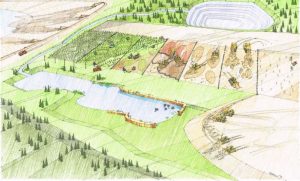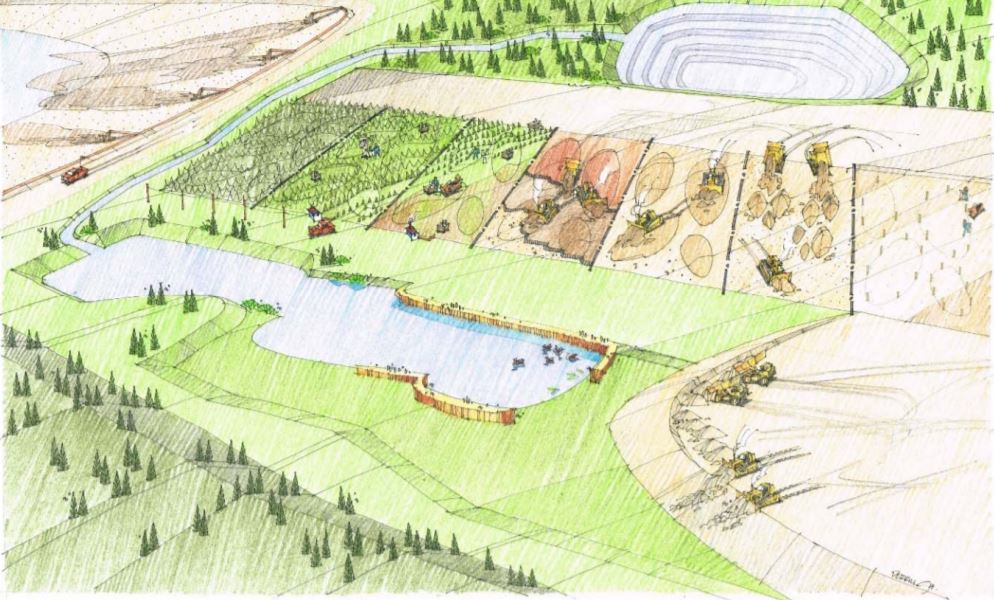[caption id="attachment_1003721704" align="aligncenter" width="457"]
 New document outlines how effective ground covers – over a waste rock pile, for instance – are created.
New document outlines how effective ground covers – over a waste rock pile, for instance – are created.[/caption]
AUSTRALIA – The
Global Cover System Guidance Document, like the GARD Guide, is intended as a best practice summary to assist mine operators, designers, and regulators to address issues where cover systems can be employed. This document builds on previous technical guidance documents on cover system design, construction, and performance monitoring. The Global Cover System Guidance Document will be of interest to individuals who are seeking more detailed information than what is outlined in Section 6.6.6 of the GARD Guide – Engineered Barriers (
www.GardGuide.com)
A holistic framework for management of reactive materials during operations and at closure is the pillar of the document. The framework for cover system design is presented at a high level, suitable for readers with a minimal technical background. It is presented at a conceptual level, using a hierarchy of climate, geology and materials, and topography, leading to an understanding of the patterns of water movement on a specific landscape. Ultimately, these elements will govern how cover systems perform, and it is up to designers to manipulate them to achieve desired performance.
This document presents a conceptual model of how cover system designs might affect contaminant and acidity loading. This model attempts to determine when the varying roles of the cover system design (e.g. control of net percolation or oxygen ingress), might influence loadings. Acknowledgment of these unique relationships provides an opportunity to optimize ML/ARID management in a cost effective manner. Other key concepts discussed within the document are the role cover systems play over the life of the mine from early conceptualization to long-term performance monitoring considerations.
Application of the holistic framework is achieved through the use of a cover system design tool. The tool walks users through relevant climatic factors to optimize cover system design alternatives for a desired performance design criteria. This allows users to understand what a realistic objective is when developing cover system design alternatives based on site specific climate conditions. Additionally, the tool refers to specific elements integral to the design where an in text commentary is provided. The tool helps identify where potential for management exists on the site, leading to the selection of the most appropriate form of prevention.
The information provided within the tool is not a replacement for site specific classification and engineering required for cover system design. However, the tool is a means of beginning early conceptualization to help focus further investigation at a site level and to begin to form realistic expectations for cover system performance at an early stage of a project.
Click here to download the report:
http://www.INAP.com.au/wp-content/uploads/2018/01/INAP-Guidance-Document-Final.pdf.
If you have any questions or comments on the report, please contact Gilles Tremblay of the
International Network for Acid Prevention at
gilles.tremblay@INAP.com.au.

 New document outlines how effective ground covers – over a waste rock pile, for instance – are created.[/caption]
AUSTRALIA – The Global Cover System Guidance Document, like the GARD Guide, is intended as a best practice summary to assist mine operators, designers, and regulators to address issues where cover systems can be employed. This document builds on previous technical guidance documents on cover system design, construction, and performance monitoring. The Global Cover System Guidance Document will be of interest to individuals who are seeking more detailed information than what is outlined in Section 6.6.6 of the GARD Guide – Engineered Barriers (
New document outlines how effective ground covers – over a waste rock pile, for instance – are created.[/caption]
AUSTRALIA – The Global Cover System Guidance Document, like the GARD Guide, is intended as a best practice summary to assist mine operators, designers, and regulators to address issues where cover systems can be employed. This document builds on previous technical guidance documents on cover system design, construction, and performance monitoring. The Global Cover System Guidance Document will be of interest to individuals who are seeking more detailed information than what is outlined in Section 6.6.6 of the GARD Guide – Engineered Barriers (
Comments